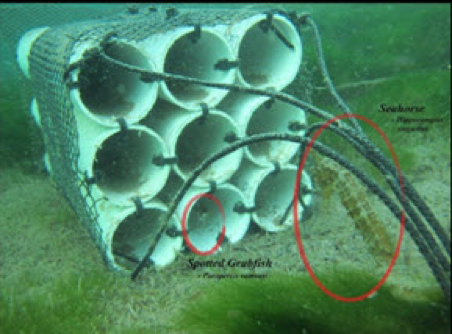Controlling Marine Pests
Exotic marine species have the potential to become serious pests to the detriment of Australian marine ecological communities and important industries such as tourism and fishing.
Management of ship ballast water and biofouling is the key control to prevent the spread of these species.
All international vessels arriving at Fremantle are required to manage their ballast water in accordance with the Australian Ballast Water Management Requirements.
The Federal and State governments are implementing National Marine Pest Surveillance Strategy. This system aims to prevent new marine pests arriving, guide responses when a new pest does arrive and minimise the spread and impact of pests already established in Australia.
In Western Australia, Fisheries (Department of Primary Industries and Regional Development) is the responsible agency for marine biosecurity including the control and prevention of introduced marine species through biofouling.
Fremantle Ports requires vessels within port limits to manage biofouling in accordance with the National Biofouling Management Guidelines. Guidelines for commercial, fishing and recreational vessels are available at the Australian Government’s Marine Pests website..
-(1000x750).tmb-cardlarge.jpg?Culture=en&sfvrsn=83750295_1)
Award for environmental excellence
Fremantle Ports, in cooperation with the Department of Primary Industries and Resource Development (DPIRD), has implemented a State Wide Array Surveillance Program (SWASP) to detect introduced marine pests. The SWASP is a world first in the use of molecular techniques in a collaborative marine biosecurity surveillance network to more rapidly detect and respond to a potential incursion of introduced marine pests. Fremantle Ports has been involved in the program since it was first piloted in 2010. It was initially established in three WA ports as an early warning system for introduced marine pests and has since evolved into a viable and cost-effective surveillance system that now spans port facilities across the entire State.
In 2018, WA Port Authorities and the DPIRD were honoured with the Golden Gecko Award for Environmental Excellence for the SWASP.
.jpg?sfvrsn=36ebea99_0)
Settlement arrays
Settlement arrays are used as an early warning system for the detection of introduced marine pests as well as a record of other marine organisms in the surveys area. The arrays are simple structures that provide extra surfaces for organisms to settle
on that are then collected and examined by marine pest experts.
Shoreline searches are conducted quarterly at low tides. Running parallel to the waterline, the searches include both intertidal and beach locations. As well as examining rocks
and artificial structures, searchers also examine wrack in detail as dead material present in wrack could provide an indication that a pest species is or was present in the area.
-(1000x563).jpg?sfvrsn=c69333e8_0)
Crab traps
Crab traps are used to target six pest crab species that have the potential to survive in the Fremantle Port area. Artificial habitat collectors known as ‘crab condos’ have been added to the program to specifically target smaller crab species.

Suggested references:
Find out how you can explore the port or get ferry and cruise info...
